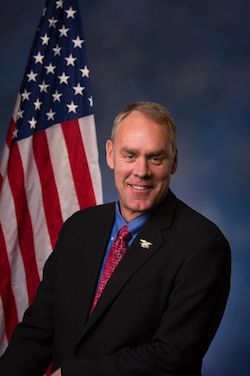SEJournal Online is the digital news magazine of the Society of Environmental Journalists. Learn more about SEJournal Online, including submission, subscription and advertising information.

Special TipSheet: Coal Leasing on Federal Lands
As part of our Journalists’ Guide to Energy & Environment 2017 special report, TipSheet has prepared a series of look-aheads for key issues to watch in the coming year.
 A quintessential environmental issue likely to be in the news early in 2017 is coal leasing on federal lands. Former President Barack Obama had put federal coal leasing on hold and proposed reforming the program. President Donald Trump has vowed to open it back up.
A quintessential environmental issue likely to be in the news early in 2017 is coal leasing on federal lands. Former President Barack Obama had put federal coal leasing on hold and proposed reforming the program. President Donald Trump has vowed to open it back up.
Of all the widely used fossil fuels, coal emits the most carbon dioxide for the amount of heat it produces. For many decades, coal powered the largest share of the U.S. electrical output. Those who want to slow climate change have targeted coal, and Obama’s signature Clean Power Plan has the effect of virtually halting its use in new power plants.
Coal-burning also causes a number of other serious air pollution problems, including acid rain, smog and mercury pollution.
Major coal deposits exist on significant stretches of federally owned land in the West, most of it managed by the Bureau of Land Management. The BLM can and does “lease” the land to private mining companies who can take the coal from it in exchange for money paid to the Treasury.
 |
| Rep. Ryan Zinke of Montana, nominee for Interior Secretary, who would oversee federal coal leasing. Photo: Courtesy U.S. House of Representatives |
Some 40 percent of the coal burned by utilities in the United States comes from federal lands. A significant share of the coal on federal lands is in the state of Montana — the home state of Ryan Zinke, Trump’s pick for Interior Secretary. If confirmed, he will oversee federal coal leasing.
Other big coal states include Wyoming, West Virginia, Kentucky, Pennsylvania, Illinois, Texas and Indiana.
If the federal government wants to control climate, environmentalists argue, it should not encourage coal-burning. Leasing federal lands for coal-mining does just this by making coal cheaper and more plentiful.
Issue to forefront with 2016 moratorium
Coal leasing has only recently come to prominence as an environmental issue.
When SEJ held its annual meeting in New Orleans in 2014 it was barely on the horizon of media and government attention. As then-Interior Secretary Sally Jewell addressed the conference, she was interrupted by a protester in an elephant costume, trying to bring up the federal coal leasing question.
The issue moved front and center in January 2016 when Obama and Jewell announced a moratorium on new federal coal leasing and a wide review of the benefits and costs of the program. This made both the Republicans in Congress [subscription required] and the coal industry unhappy. They saw it as a job-killer in coal-mining communities.
One of Trump’s key appeals during the campaign was a vow to help the coal industry and bring back declining coal jobs. Reversing the Obama coal-leasing moratorium is one of the things on his administration’s to-do short list. This is is an administrative action: something he could do with little more than the stroke of a pen. But undoing the coal moratorium is unlikely to do much to solve the industry’s deeper problems.
And it won’t stop the debate. Environmentalists (e.g., the Sierra Club’s Beyond Coal campaign linked above) will still be there — and will still be taking the government to court. And even if it helps Wyoming and Montana, it won’t do much to help West Virginia and Kentucky, where coal is not mined from federal land.

The study that accompanied the Obama coal moratorium did suggest that the industry was getting federal coal at a bargain price, and that royalties should be increased. This will remain an issue, even under Trump. The study will offer some foundation for lawsuits challenging a business-as-usual leasing program. And Trump may be challenged to get a “better deal” for taxpayers.
Regardless of royalty rates, and regardless of federal leasing policies, most energy industry analysts say there is no way Trump can fulfill his pledge to bring back coal.
Although coal-state politicians may claim otherwise, the real problem is not a regulatory “war on coal” (which may exist), but the falling price of natural gas produced by fracking (not to mention a shrinking export market and mining technology that needs fewer workers).
During a September 2016 campaign stop in Pittsburgh, Trump promised to boost both gas and coal. He can’t, because in the marketplace, they are competitors. Even the power of the president can not change market fundamentals.
* From the weekly news magazine SEJournal Online, Vol. 2, No. 5. Content from each new issue of SEJournal Online is available to the public via the SEJournal Online main page. Subscribe to the e-newsletter here. And see past issues of the SEJournal archived here.












 Advertisement
Advertisement 



